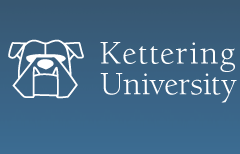Student Understanding of Program Outcomes through Formative and Summative Course-level Assessment
Document Type
Conference Proceeding
Publication Date
2004
Publication Title
ASEE Annual Conference Proceedings
Abstract
In this paper, an approach is suggested to begin a process in which each student, while solving a homework problem, or a test or a project is asked to provide additional information concerning what concept(s) is (are) targeted in each homework problem and to what extent, if any, the Program Outcomes (PO's) were encountered. The courses used here as examples for this approach are: Mechanics III (particle and rigid body kinematics and dynamics) and Design of Mechanical Components I. Students seem in tune with the targeted concepts via course experiences but rather non-consistent with regards to the interpretation of Program Outcomes. For many students, this is the first time that they are asked to examine the outcomes critically, but they all seem to understand and realize the merit of the process (particularly due to the quick feedback of the results that they receive). Some students were further challenged to "redesign" some of the homework problems in such a way that the previously addressed "weaker" Program Outcomes could be better addressed in those redesigned problems. The results of the "redesign" exercise are interesting in that students found it both difficult and challenging to create a new set of homework problems. This leads to the need for the instructor to provide effective ways of posing homework problems, which may be different from conventional exercise problems presented in the currently available textbooks. Presented here is a course-level formative and summative assessment of students' understanding of the Program Outcomes, including comparison with the instructor's target expectation for the achievement of such outcomes. The paper concludes with ways to gather better data illustrating students' interpretation of Program Outcomes and perhaps redesign course content and instructional method to better meet desired outcomes.
Volume
1
Issue
1
First Page
13021
Last Page
13036
ISSN
0190-1052
Rights
Copyright © 2004 American Society of Engineering Education
Recommended Citation
Echempati, Raghu; Mazzei, Arnaldo J. Jr.; and Nasr, Karim J., "Student Understanding of Program Outcomes through Formative and Summative Course-level Assessment" (2004). Mechanical Engineering Publications. 87.
https://digitalcommons.kettering.edu/mech_eng_facultypubs/87

